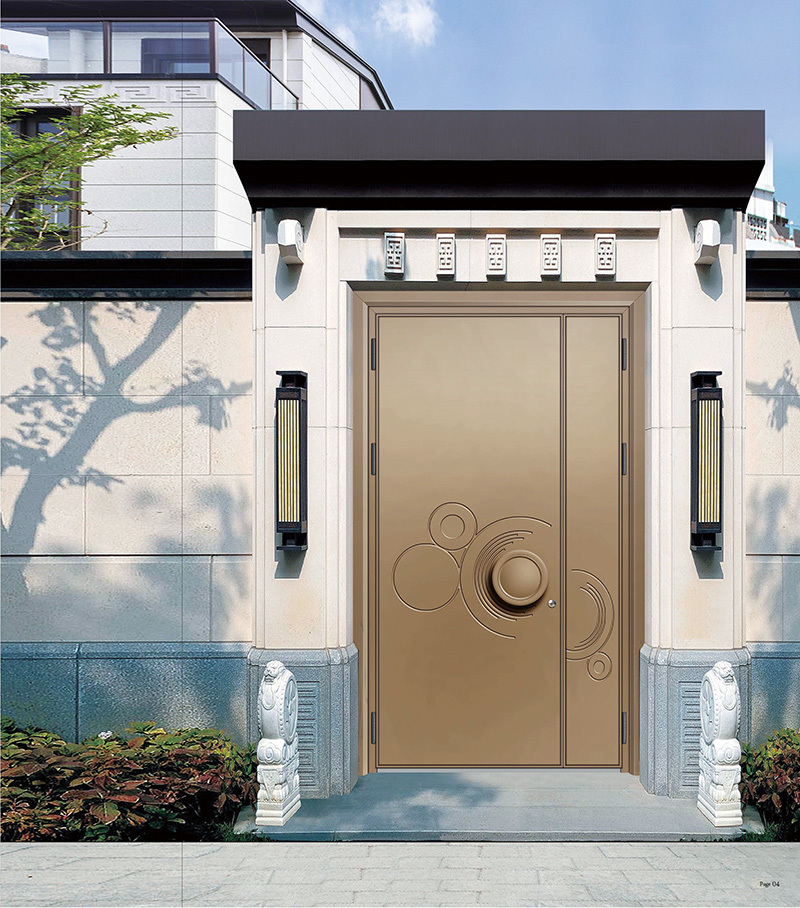Choosing the Right Anti-Burglary Door: A Complete Guide to Enhanced Security
Published Time:
2025-11-05
Choosing the Right Anti-Burglary Door: A Complete Guide Table of Contents 1. Understanding Anti-Burglary Doors 2. The Importance of Security Doors in Home Safety 3. Key Features to Consider When Choosing Anti-Burglary Doors 3.1. Material Options: Steel vs. Fiberglass vs. Wood 3.2. Advanced Locking Systems for Better Protection 3.3. Importan
Choosing the Right Anti-Burglary Door: A Complete Guide
Table of Contents
- 1. Understanding Anti-Burglary Doors
- 2. The Importance of Security Doors in Home Safety
- 3. Key Features to Consider When Choosing Anti-Burglary Doors
- 3.1. Material Options: Steel vs. Fiberglass vs. Wood
- 3.2. Advanced Locking Systems for Better Protection
- 3.3. Importance of Door Thickness and Weight
- 3.4. Frame and Hinge Quality: The Unsung Heroes
- 4. Aesthetic Considerations: Blending Security with Style
- 5. The Installation Process: DIY vs. Professional Help
- 6. Maintenance Tips for Longevity and Effectiveness
- 7. Costs and Budgeting: Finding a Balance
- 8. Frequently Asked Questions
1. Understanding Anti-Burglary Doors
Anti-burglary doors are specifically designed to provide enhanced security for residential and commercial properties. Unlike standard doors, these doors come equipped with features that help prevent unauthorized access. Understanding what makes an anti-burglary door effective is crucial for making an informed choice.
2. The Importance of Security Doors in Home Safety
In a world where home invasions are a growing concern, the importance of security doors cannot be overstated. An effective anti-burglary door does more than just enhance security; it offers peace of mind, making homeowners feel safe in their own space. In many cases, the presence of a robust door can deter potential burglars entirely.
3. Key Features to Consider When Choosing Anti-Burglary Doors
When selecting an anti-burglary door, it is essential to consider several features that contribute to its effectiveness.
3.1. Material Options: Steel vs. Fiberglass vs. Wood
The material of the door plays a significant role in its durability and security. Here’s a closer look at the most common materials:
- **Steel**: Steel doors are the most robust and offer superior strength. They are resistant to impact and provide excellent protection against forced entry.
- **Fiberglass**: This option combines strength with aesthetic appeal. Fiberglass doors can mimic the appearance of wood while offering the durability of steel.
- **Wood**: Solid wood doors can provide a classic look and moderate security. However, they may not be as resistant to significant force as steel or fiberglass.
Choosing the right material depends on your specific security needs and aesthetic preferences.
3.2. Advanced Locking Systems for Better Protection
The locking mechanism is arguably the heart of an anti-burglary door. Opt for doors with multi-point locking systems that engage at multiple points along the frame. This feature significantly increases resistance against forced entry. Additionally, look for deadbolts, smart locks, or biometric locks for added security.
3.3. Importance of Door Thickness and Weight
The thickness and weight of a door directly correlate with its strength and resistance to break-ins. A door that is at least 1.75 inches thick is generally considered secure. Heavier doors made of solid materials are also more challenging to breach.
3.4. Frame and Hinge Quality: The Unsung Heroes
The door frame and hinges are often overlooked but are critical for the door's integrity. Ensure that the door frame is made of sturdy materials, such as steel or reinforced wood. Additionally, heavy-duty hinges that are secured with long screws can provide additional protection against forced entry.
4. Aesthetic Considerations: Blending Security with Style
While security is the primary concern, aesthetics should not be ignored. An anti-burglary door should complement your home’s exterior and interior design. Available in various styles, colors, and finishes, homeowners can find a door that not only protects but also enhances the property’s appearance.
5. The Installation Process: DIY vs. Professional Help
The installation of an anti-burglary door can significantly impact its performance. While some homeowners may opt for DIY installation, this approach may compromise security if not done correctly. Professional installation ensures that the door is fitted properly, maximizing its protective features.
When considering installation:
- **DIY**: If you have experience and the right tools, a DIY project can save costs. However, ensure you follow all safety guidelines and instructions.
- **Professional**: Hiring a professional guarantees a seamless installation process and often includes warranties on labor.
6. Maintenance Tips for Longevity and Effectiveness
To ensure your anti-burglary door remains effective over time, regular maintenance is essential. Here are some tips to keep in mind:
- **Regularly Inspect the Door and Frame**: Look for signs of wear and tear, including rust or warping.
- **Lubricate Locks and Hinges**: Use appropriate lubricants to maintain smooth operation and prevent rust.
- **Check Weather Stripping**: Ensure that the weather stripping is intact to keep out drafts and moisture.
- **Repaint as Needed**: If your door is painted, touch up any chips or scratches to prevent corrosion.
7. Costs and Budgeting: Finding a Balance
The cost of an anti-burglary door can vary widely based on materials, features, and installation. On average, homeowners can expect to pay between $500 and $3,000 for a quality door and installation. When budgeting, consider the long-term benefits of investing in higher-quality doors that provide better security and durability.
8. Frequently Asked Questions
What is the best material for an anti-burglary door?
The best material is typically steel due to its strength and durability. However, fiberglass also offers excellent security while providing aesthetic versatility.
How can I enhance the security of my existing door?
You can enhance security by adding a deadbolt, installing a security screen, or reinforcing the door frame and hinges.
Are anti-burglary doors weatherproof?
Many anti-burglary doors come with weatherproof features, but it’s essential to check the specifications to ensure they suit your climate.
How often should I replace my anti-burglary door?
If properly maintained, an anti-burglary door can last 20 years or more. However, you should replace it if you notice significant wear or damage.
Can I install an anti-burglary door myself?
While it is possible to install a door yourself, professional installation is recommended to ensure maximum security and performance.
Conclusion
Choosing the right anti-burglary door is a crucial step in protecting your home and ensuring the safety of your family. By considering various factors such as materials, locking systems, and aesthetics, you can find a door that meets your security needs while also enhancing your property’s appearance. Investing in a quality anti-burglary door not only deters potential intruders but also provides peace of mind knowing your home is secure. Whether you opt for a professional installation or take the DIY route, maintaining your door is key to long-lasting security. Take action today and secure your home with the best anti-burglary door available.

 English
English
 русский
русский
 ???????
???????



